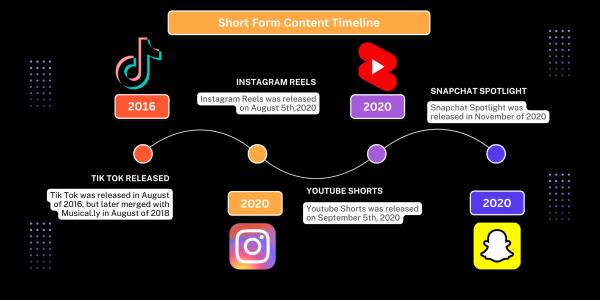Introduction to Investing: A Teen’s Guide
After events such as the GameStop stock frenzy earlier this year, teen interest in the world of investing has gone up. But even with the increase in interest, according to CNBC, only about 14% of teenagers have actually invested their money in stock. Yet a low percentage makes complete sense because while the concept of investing may seem intriguing to some, actually participating in the stock market can be complex and daunting.
According to a recent study by ING Direct USA and Capital One, only 17% of teenagers know how to or feel prepared to manage their own money, let alone know how to invest it. However, investing and teaching youth how to invest in the stock market can help create a financially healthy and independent generation. Through it, one can learn how to better manage their money, grow their net worth and set themselves up for a financially stable future.

The Basics:
Investing is buying assets such as stocks, bonds and commodities, in hopes that they will gain value over time so you can earn a profit.
Stocks: Investing in stock gives you partial ownership of a company. The amount of units of stock one purchases, called shares, gives the owner of the stock a proportional amount of the company’s assets equivalent to the amount of shares they have. Investing in a company allows you to participate and make or lose money according to its gains and losses.
Bonds: When companies need to raise funds, they borrow money from investors by issuing debt, called bonds. By investing in bonds, you are loaning money to the issuer for a fixed period of time. In return for your loan, the issuer will pay you a fixed rate of return as well as the money you initially loaned them.
Commodities: These assets are generally raw materials, such as oil, precious metals, and agricultural products, used by industry, and their prices depend on market demand. While you can buy the physical commodity and sell it, most investors buy commodities through different contracts, like options of future contracts (betting on whether a stock will go up or down not the actual stock), or securities like exchange-traded funds (ETFs, which are explained in the next section), or buying the shares of companies that produce commodities.
Funds: Funds, such as mutual funds and exchange-traded funds, invest in a combination of stocks, bonds and commodities. A share of a fund lets you invest in hundreds or thousands of assets at once. By investing in funds, you easily diversify your investing portfolio.
- Mutual funds: Mutual funds buy and sell a wide range of assets. These funds are usually actively managed by investment professionals who choose what the fund will invest in, often trying to perform better than a benchmark index. This is a more aggressive and more expensive approach.
- ETFs: ETFs also contain hundreds or thousands of individual securities. ETFs usually try to copy the performance of a particular benchmark index, rather than outperform them but usually trade at prices determined by how the market as a whole is performing. This is a more passive and less expensive approach. ETFs are special because they can be traded throughout the day like stocks. Index funds can only be bought and sold for the price set at the end of the day.
- Index Fund: Index funds are made to strictly mirror a stock index (such as the S&P 500 or The Dow Jones Industrial Average) and follow this benchmark index.
Profit usually comes in two forms, capital gain and generating income. Capital gains occur when you get a return by buying assets at a low price and selling them for a higher price after their value appreciates (increases) over time. Generating income through investing is when you buy assets that create cash flow and hold onto them, without selling, for long periods of time.
Best Options:
Investing is a very personalized endeavour. There are many different possibilities when it comes to putting your money on the line, so one of the most crucial pieces to building a personalized portfolio and strategy is learning to weigh the potential rewards against the risks.
In understanding risk and your tolerance to it, you can choose the best investment path for you. Stocks are generally riskier, depending on the size and reliability of the company you invest in, and bonds are usually a safer, more conservative option. Both options can be hard to manage if you are just starting, as you will have to keep an eye on the market to know when to buy and sell.
Investing in a mutual fund or ETF diversifies your portfolio, creating a balance between risk and reward. There are many funds–with differing risks you can choose from–but choosing options that diversify your portfolio is important because investing in a larger variety of assets, instead of pooling all of your money into a few potentially risky assets, helps to potentially mitigate the risk of high loss.
Bottom line, a good rule of thumb, as stated by The Balance, a website dedicated to simplifying personal finance, is “the higher the risk, the higher the potential return, and the less likely it will achieve the higher return.”

If you are starting to get into investing yourself, an important piece of information to know is the average return of the S&P 500. The S&P 500 is a stock index composed of the top 500 companies in the United States. A stock market index is created to track the performance of any particular market; in the case for S&P, each company’s percentage of the index is based on their market cap or value. The average annual return of the S&P 500 companies is 10-11%. Many hedge fund managers, mutual funds and wealthy individuals fail to meet this benchmark. If you are not making an 11% return on your investments, it could be a better idea to invest in an S&P 500 index and watch your money grow without doing any work.
Benefits of Starting Now:
It can still seem unclear as to how a teenager would be able to get involved in investing. Things can get confusing, especially when you have little money and usually have to be 18 to set up a brokerage account, but that does not mean you cannot invest.
To invest, you will need a brokerage account. A brokerage account is an account used to buy and sell assets. Like a bank account, you can transfer money in and out, but unlike a bank account, you can do so at any time and invest as much as you’d like. Those under 18 usually cannot open their own brokerage account, so considering talking to your parents about investing your money in their brokerage account in coordination with your investing decisions or having them set up a custodial account for you.
With the introduction of fractional shares, it is possible to invest in any public company regardless of cost. Fractional shares are when you own less than one whole share in a company. It basically enables you to buy stock in the dollar amount you want and not by the amount of shares. This can enable many people to invest in stocks that they otherwise wouldn’t have been able to afford. This concept is offered by many popular brokers, such as E-Trade, Charles Schwab and Robinhood.
There are also many resources out there that can guide you in the right direction. Ray Dalio, who helped found the largest hedge fund in the world, Bridgewater Associates, has done many interviews with others and releases videos talking about the current state of the economy. He offers investment advice in these videos that could be very helpful.
If investing lingo still makes the idea seem confusing and abstract, another great way to start is to look at an investing returns calculator such as CalcXML.com. These calculators let you play around with variables like how much you want to invest each month, how many years you plan to invest, and the expected rate of return, and can demonstrate the growth of money through investing without actually having to invest.
Warren Buffet is also a very good resource for learning how to invest. His biggest tip for the general public is to buy S&P 500 index funds to grow your net worth. In 2008, to show the strong performance of the S&P 500, he made a million dollar bet with five hedge funds claiming that in 10 years, the index fund would outperform the hedge funds. The S&P 500 outperformed the hedge funds 9 out of the 10 years during the bet and Buffet ended up donating the million dollars to Girls Inc. of Omaha. He used this bet as an example that you don’t need an economics degree to make good money on the stock market; all you need are index funds.
Teenagers already have busy lives, so it can at times be impossible to constantly watch the stock market. Investing in something like an index fund allows you to invest your money and then let it sit, generating passive income. For example, if you put $100 in a brokerage account, added $20 a month, and got the average 10% return from an index fund like the S&P 500, in 10 years, you would have around $4,250. This is an example of passive investing and with passive investing, you can help prepare yourself for the future.
Investing right now can be a good idea because the earlier you can start investing and growing your money, the more prepared you may be for paying off student loans, getting your first mortgage or having a nice retirement fund.






